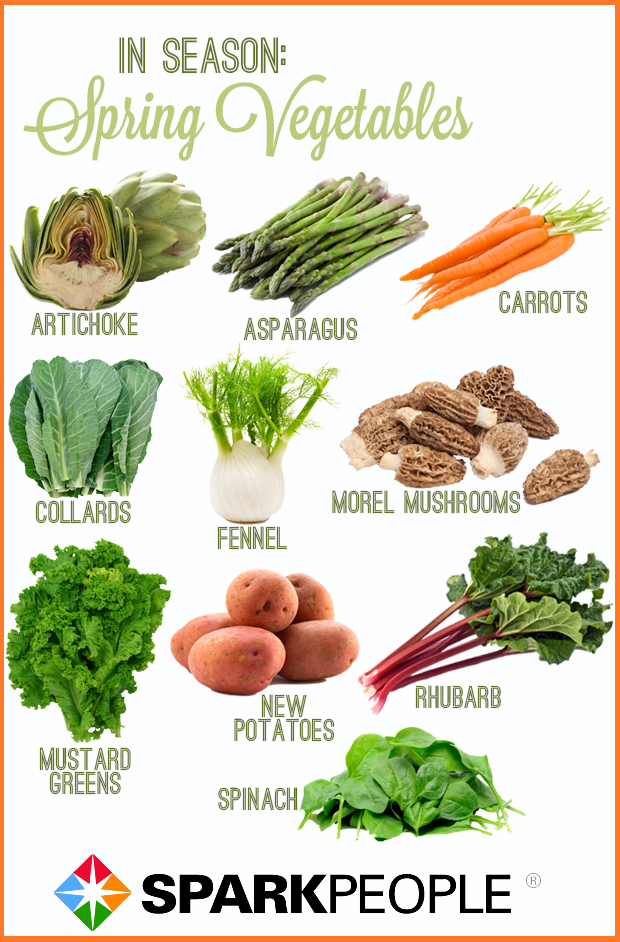|
In the US, we enjoy practically unlimited access to any food any time of the year. Although it's nice to have watermelon in February and asparagus in August, many people don't even know that foods have a season, let alone what foods are in season at any given time of year. But in the food world, local is the new exotic. Farmer’s markets are popping up in every neighborhood as consumers are realizing the benefits of eating food that was grown within miles of their mouths. Local food boasts a host of benefits, including better flavor, higher nutritional value, and less environmental burden. It's healthier for you because you get the higher nutrient levels from just-picked produce. It's healthier for the environment because local food uses less fossil fuel for transport. It tastes better because it really is fresh (not shipped-from-across-the-country-yet-still-bearing-a-label-that-says-fresh). And it’s also interesting, as each season brings a new crop of foods that you haven't had for an entire year. Before you've had a chance to tire of its bounty, the season changes to bring new, flavorful foods. If you want to eat healthy, home-cooked meals without all the fuss, try a seasonal pantry makeover! To do it, stock up on locally-grown foods—a fun trip to your local farmer's market will yield the majority of the ingredients you need—and simply create meals based on what's in season in your region. Availability will vary from region to region, but here's a list of foods that make spring their season, along with tips on how to incorporate the new-to-you ingredients into your meals. Spring VegetablesBe sure to pin this graphic for reference!
Artichokes. A perfect springtime appetizer, serve artichokes that have been boiled until tender (about an hour) with homemade garlic butter for dipping. Or add cooked artichokes to pasta sauce, pizza or salads. Asparagus. Although you can pick up asparagus at the supermarket any time of the year, it never tastes as good as freshly-harvested springtime asparagus. Grill, steam, or braise, and sprinkle with some kosher salt for a simple side-dish. Carrots. Pair them with peanut butter for a quick and healthy midday snack, or make a side dish like glazed carrots for a gourmet dinner. Collards. Abundant spring through fall, this dark leafy green is the main ingredient in famous southern greens recipes. Collards are also a rich source of calcium. Fennel. Fennel slightly resembles celery, with a bulbous base, which is the part that you eat. Chop into small spears and sauté in olive oil and minced garlic until tender, then sprinkle with minced fresh parsley and cook a minute more. Morels. These wild mushrooms are so treasured, there’s even a website dedicated to morel "hunting," complete with message boards and photos of people’s finds. Morels are delicious sautéed or roasted, and boast a nutty, meaty flavor and a rich and creamy texture. Mustard Greens. High in antioxidants and vitamins K and A, these dark leafy greens are as nutritious as they are flavorful. The raw leaves can be added to salads or steamed or boiled until tender. New Potatoes. Although they can be mashed, these springtime babies are best roasted or boiled and topped with a pat of butter and some kosher salt to accentuate their fresh flavor. Rhubarb. Most famous for its part in rhubarb pie, this perennial vegetable can be cooked and pureed to make a sweet sauce, or even used to make oatmeal-rhubarb bars. Just make sure you don’t eat the leaves, which are toxic. Spinach. Mix with baby lettuce for an exceptional salad, or sauté with garlic to make a delicious side dish. Spring FruitsFruit is always easy. It is ready to eat, and tastes great. But if you're looking for some new ways to incorporate fruit into your menu besides the "grab and bite" technique, try fruit smoothies, fruit cobblers and fruit-topped pancakes and French toast.
Spring SeasoningsIf you've done a little cooking, you probably know that the seasonings can make the meal. Here are some seasonal seasonings for your spring suppers.
|






